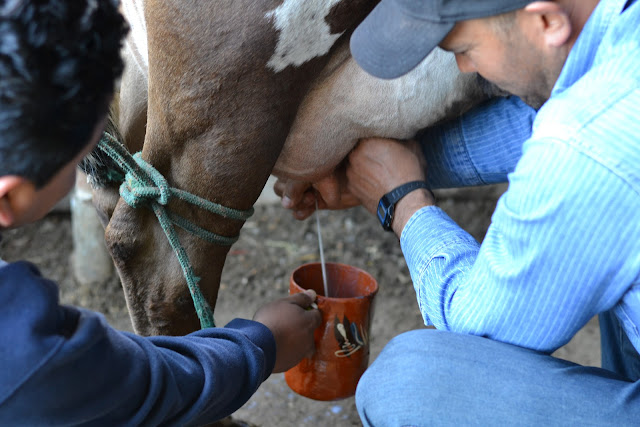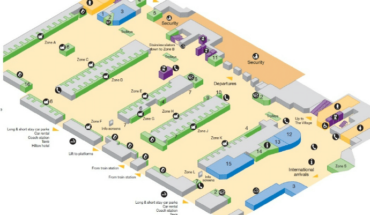Pajarete, a potent Mexican morning cocktail, has earned a troubling nickname “drink of death” in parts of Mexico. This name emerged after 25 people lost their lives and 20 others fell ill from drinking this concoction. The traditional drink remains deeply woven into the morning routines of farm workers, ranchers, and laborers throughout Mexico and Southern California, despite its dangers.
The pajarete serves as both a stimulant-packed liquid meal and creates a brief high that lasts two to three hours. Mexican vendors sell this unique blend of raw milk, alcohol, chocolate, and other ingredients for just a dollar per glass. Southern California prices run higher at $10-20. The drink’s name reflects its effects – “pajarete” hints at something that “helps you take flight”. Tainted liquor in pajaretes has claimed at least 189 lives in Mexico since May 1. Rural economies still depend on this drink as it gives dairy farmers better profits than selling regular milk.

What is a Pajarete?
Mexico’s dairy-producing regions celebrate a unique morning tradition that brings farmers, laborers, and community members together. The pajarete means more than just a drink – it’s a cultural institution that has kept rural communities going for generations.
Origins in rural Mexico
Western Mexico’s states of Jalisco, Michoacán, Colima, and parts of Nayarit are where the pajarete tradition thrives. This tradition stands apart from other Mexican culinary customs. Chef Nico Mejia explains, “You won’t find pajaretes outside of these states and regions… It’s a shared culture and tradition that evolved from the haciendas to ranches in a time before the current political divisions [of modern states]”.
Mexican cowboys who milked cows in the early morning started this practice. Agricultural journalist Conrado Vázquez Martínez tells us the tradition grew naturally among workers who had to milk over 100 cows by hand starting at 6 AM in cold weather. They needed something to warm up and steady their hands before their skilled work.
Jalisco’s ranchers still see their morning pajarete as a simple breakfast before working the land. This working-class ritual has grown into social gatherings that happen throughout the week. These gatherings now extend beyond Mexico to Southern California’s communities like Chino, Muscoy, Victorville, Palmdale, and even Compton.
Common ingredients used
A pajarete’s heart lies in mixing leche bronca (raw, unpasteurized milk straight from the cow or goat) with alcohol and flavorings. People call it “wild milk,” and store-bought pasteurized varieties just can’t match its distinctive taste.
You’ll find these typical ingredients:
- Fresh, foamy raw milk (leche bronca)
- Alcohol de caña (sugar cane alcohol) or tequila (192-proof in some cases)
- Cocoa powder or shaved chocolate (often Chocomil brand)
- Sugar
- Instant coffee or coffee grounds
- Optional additions: cinnamon, vanilla, crushed mazapán candy, honey
Ranchers have made their morning drinks unique by adding different flavors. Nescafé

Step 3: Pouring the alcohol
The alcohol goes in next to dissolve the dry ingredients. Real pajaretes use alcohol de caña (sugar cane alcohol), a strong spirit that’s almost pure at 96-proof. Tequila sometimes takes its place in areas where agave grows everywhere.
Some pajarete experts add their own twist. One Southern California ranch has a unique approach: “The special pajaretes recipe here is made with 96 percent sugar cane alcohol poured from a jug and some Christian Brothers Brandy VS that imparts a special, fruity flavor”.
The amount of alcohol depends on what you like, usually filling about a quarter to a third of the cup. This strong spirit does two jobs—it gets you tipsy and might kill germs in the raw milk.
Step 4: Fresh milk from the cow or goat
Raw milk straight from the animal makes a pajarete authentic. One person describes it perfectly: “The idea is to milk the cow directly into the mug, squeezing the tit with enough gentle force so that the stream of warm, healing milk comes squirting out in a jet and forms a froth”.
The animal’s legs need to be tied so it stays still. Someone watching at a ranch noted, “A visitor pulls up a low stool beside a cow named Texana whose legs are tied together”. The warm milk feels hot on your first sip, “as if it had just come out of a microwave”.
Optional: Flaming pajarete variation
The “Pajarete Llamada” or flamed version adds some excitement. Some people “take a lighter and set the alcohol on fire” before adding milk, creating quite a show.
Someone describes this flashy version: “Just before the milk is drawn in, someone ignites the drink with a lighter and hands the vessel to the milker, whereupon hot milk spews flames from the cup. (No animals or humans are harmed in the process.) The result, a cocktail of caramelized sugar and chocolate with warm milk, is delicious”.
This flame trick makes the sugar caramelize, giving you richer flavors where toffee notes blend with chocolate and coffee.
Cultural Significance in Mexico and Beyond
The pajarete stands as a cherished cultural institution that brings communities together in Mexico and Southern California.
Pajarete in Jalisco, Michoacán, and Colima
Pajarete’s cultural influence thrives in western Mexico’s heartland. “The pajarete is a drink of Jalisco origin, but it is also used in other Mexican states such as Michoacán, Guanajuato and Colima”. Each area adds its own twist to the classic recipe. Local communities in southern Jalisco use honey instead of sugar when supplies run low. States like Colima, Michoacán, and Guanajuato add their own flair by mixing in cinnamon, marzipán candy, or other sweet treats.
Morning rituals and community bonding
The pajarete means much more than just a drink in these regions – it shapes daily life through morning rituals. Jalisco’s families start their day with a pajarete, especially in rural areas where they “go out to milk cows and immediately prepare it”. The drink serves many social purposes. Some use it as a quick breakfast on busy mornings, others drink it before digging into heartier meals like carnitas, and many swear by it as a hangover cure.
Pajarete in Southern California
This beloved tradition has found a new home in Southern California’s ranching communities. “Pajaretes, the name of the spiked hot chocolate as well as the gathering itself, is a morning ritual for countless farm workers, ranchers, construction workers, and laborers across Southern California”. People gather in semirural spots like Chino, Muscoy, Victorville, Palmdale, and even urban Compton. The tradition grew substantially during pandemic lockdowns when “people across L.A. were desperate for clandestine social contact”.
The role of music and social gatherings
Mexican pajaretes keep things simple, but California has turned them into lively social events. Families show up by 8:30 a.m. to enjoy the drink, while kids sip on non-alcoholic chocolate milk versions. Banda or norteño music groups play regional Mexican songs and corridos that turn mornings into impromptu celebrations. “In Mexico, it’s very simple. It’s just a few dudes sitting around in the morning… But it’s really a different tradition here… A party crowd comes in, cowgirls and cowboys in their 20s and 30s… you have live music”.
Health and Safety Concerns
People in parts of Mexico call el pajarete “the drink of death” because of its life-threatening risks. This deadly nickname comes from two dangerous ingredients: bad alcohol and raw milk.
Methanol poisoning risks
The death toll reached 47 people in Jalisco during 2020. These people died after drinking pajaretes that contained homemade cane alcohol with dangerous methanol levels. The liver turns methanol, a common ingredient in solvents and antifreeze, into formaldehyde and formic acid. This transformation makes it deadly within hours.
People who get methanol poisoning show these warning signs:
- Numb hands
- A heavy feeling in their body
- Vision problems or blindness
- Trouble breathing
- Seizures and intense stomach pain
Just 2 tablespoons of methanol can kill a child, while adults might die from 2 to 8 ounces. The death count from bad liquor reached 189 lives in Mexico between May and July 2020.
How to identify safe alcohol
Anyone who wants to drink pajarete needs to choose their alcohol with care. Safe brands like Michoacano and Alcohol Tapatío (Alcohol Puro de Caña) are a better choice. These bottles say “no debe beberse” (don’t drink this), but people think they’re safe enough when mixed with milk.
Food expert Bill Esparza gives straight advice: “Don’t drink out of an unlabeled bottle… Just bring your own tequila”. Health experts keep telling people to stay away from homemade drinks. Nobody can guarantee if homemade cane alcohol is safe to drink.
Why raw milk is used and its implications
Raw milk fans say it’s more nutritious, but CDC data tells a different story. From 1998 through 2018, raw milk caused 202 disease outbreaks. These led to 2,645 people getting sick and 228 ending up in hospitals.
Raw milk might contain harmful bacteria like Salmonella, E. coli, Listeria, and Campylobacter. That’s why we have pasteurization today – too many people got sick or died from drinking raw milk.
Some people who drink pajarete believe strong alcohol kills the bad stuff in milk, just like pasteurization. Scientists don’t buy this idea.
Economic and Social Impact
Economic and Social Impact
The simple pajarete means much more than just keeping traditions alive—it’s becoming a crucial economic lifeline for struggling dairy communities in Mexico and beyond.
Support for local dairy farmers
Ranchers like Limon find a vital source of income through pajaretes on their government-subsidized land with mountain views. Southern California’s ranchers charge about $10 per drink to keep their animals healthy and well-fed. This underground economy thrives in rural Mexico and now spreads to California’s farming communities.
Samuel Brown Vasquez, who leads the second generation of Chicano organizers in Avocado Heights, wants to keep this farming way of life alive in Los Angeles County. He sees pajarete gatherings as similar to “the town square”—places where people connect and do business. LA has always been “ag to its core,” he says, even as America’s second-largest urban area.
Why pajaretes are more profitable than milk sales
Pajarete’s business model is simple yet powerful. Mexican vendors sell each drink for about a dollar, but this small price brings better returns than regular milk sales. Cattle ranchers switch to making pajaretes because:
- Fresh milk markets are too crowded
- Pajaretes sell for more than the same amount of milk
- Milk companies pay farmers just “a few pesos per liter”
- US powdered milk imports make fresh milk prices drop
One farmer explains that after buying alcohol, chocolate, sugar, and instant coffee, pajaretes bring in much more money than selling milk. The drink’s high protein content lets workers stay full longer—they can “make it through most of the day without a meal” after having one early morning pajarete.
The future of pajaretes amid regulation
Pajarete culture keeps growing stronger. Adalberto Velazco, who heads Jalisco’s Regional Livestock Union, says “hundreds of ranchers across 45 municipalities are dedicated to producing pajarete”. The tradition now spreads through California in places like Bakersfield, Fresno, Sacramento, and south into Baja California.
Studies show pajaretes could boost agrotourism. Research proves that “the sale of pajarete has improved the economy of milk producers and can be a tourist attraction,” but farmers need better milking quality, infrastructure, and service.
Summing all up
Pajarete is more than just a mix of simple ingredients – it’s the life-blood of rural Mexican life. This potent morning ritual brings people together in western Mexico and now Southern California, while helping local economies thrive. The drink definitely comes with major health risks – from methanol poisoning to harmful bacteria in raw milk. Yet devoted fans keep coming back for their morning ritual despite knowing these dangers.
The economic side of pajarete tells an interesting story. Dairy farmers struggling with tough market conditions have found that making pajarete brings in much more money than just selling milk. This age-old practice turns a simple farm product into something special that people will pay premium prices for.
The story of pajarete shows how food traditions grow and change as they cross borders. What started as a quick energy boost for Mexican cowboys has turned into big social events with live music and whole families getting together in Southern California.
Pajarete’s future looks bright despite health warnings and possible regulation issues. Its growing popularity in California and steady following in Mexico shows how deeply rooted cultural practices can survive and thrive in modern times. Health officials are right to warn about raw milk and unregulated alcohol, but the tradition keeps going strong.
The most amazing thing about pajarete is how it stays true to its country roots while fitting into new places. This drink means much more than its ingredients – it shows community’s strength, farming heritage, and people’s endless ability to turn everyday needs into celebrations.
Here are some FAQs about what is pajarete:
What is the meaning of pajarete?
Pajarete refers to a traditional Mexican drink that combines alcohol with fresh milk, typically enjoyed in rural areas. The term pajarete mexico specifically describes this creamy, boozy beverage often made with rum or brandy. El pajarete has cultural significance in Mexican farming communities as both a drink and sometimes a remedy.
What is alcohol with milk called?
An alcohol with milk mixture is commonly called pajarete drink in Mexican tradition. Other cultures have similar drinks like Irish cream or milk punches, but what is pajarete stands out as a distinct Latin American preparation. The pajarete mexico version typically uses raw milk and cane liquor for a unique farm-style cocktail.
How do you make a pajarete?
To make a pajarete drink, you mix fresh raw milk with alcohol like brandy or rum, often adding cinnamon and sugar. Traditional what is a pajarete preparation involves vigorously shaking or blending the ingredients to create a frothy texture. Some el pajarete recipes include raw eggs for extra richness, similar to eggnog.
What is milk and tequila called?
While not traditionally called pajarete mexico, a tequila milk cocktail would be similar to what is pajarete. The closest named tequila-milk drink is the “Batida” in Brazil, though el pajarete specifically refers to the Mexican version with different spirits. Tequila milk drinks are less common than rum or brandy variations.
What is Spanish for alcohol?
The Spanish word for alcohol is simply “alcohol,” though what is pajarete represents a specific alcoholic preparation. In the context of pajarete drink, you might hear “licor” (liquor) or “aguardiente” (firewater) used regionally. The term el pajarete itself refers to the complete milk-alcohol mixture rather than just the spirit.
What is the German word for fresh milk?
The German word for fresh milk is “frische Milch,” unrelated to what is a pajarete in Mexican culture. While Germany has its own milk-based alcoholic drinks, the pajarete mexico tradition remains unique to Latin America. The term el pajarete specifically describes the Mexican farmhouse version of this creamy cocktail.


